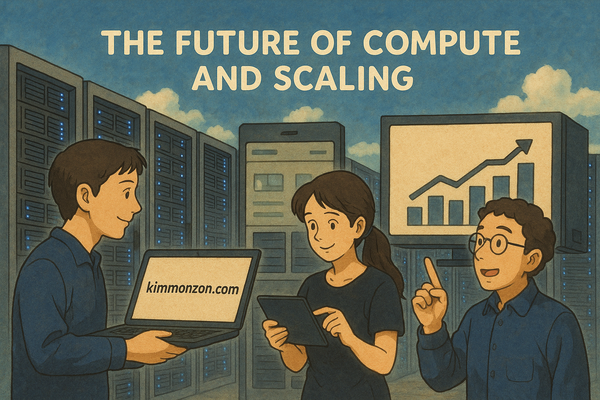Navigating the Future of Work in the Age of AI

For Readers: This is my speech for my toastmaster.
Good evening fellow Toastmasters,
Today, I am honored to speak to you about a topic that is rapidly changing the world we live in – generative AI and its impact on the future of jobs.
Generative AI refers to systems that can create new content, such as images, music, or text, that is similar to content created by humans. One of the most prominent examples of generative AI is ChatGPT, a language model that can generate human-like responses to text-based queries.
While generative AI has the potential to transform our world in many exciting ways, it also raises concerns about the impact it may have on jobs. As we grow older, we may become even more anxious about our future job prospects in the face of these changes.
So, what can we do to prepare ourselves for the changes that generative AI may bring to the job market? First and foremost, we must understand the capabilities and limitations of AI. While AI is advancing rapidly, there are still many tasks that it cannot do as well as humans, such as tasks that require creativity, empathy, or complex decision-making. By focusing on developing skills that complement AI, such as emotional intelligence or critical thinking, we can make ourselves more valuable in the job market.
Secondly, we must stay informed about the latest developments in AI and how they may impact our industries. By keeping up to date with emerging technologies, we can be better prepared to adapt to changes in the job market and identify new opportunities.
Lastly, we must advocate for policies and regulations that support workers in the face of AI-driven automation. This may include measures such as providing education and training programs to help workers transition to new roles, or creating social safety nets to support those who are unable to find employment.
As Abraham Lincoln once said, "The best way to predict your future is to create it."
We must take proactive steps to ensure that we are prepared for the changes that generative AI may bring to the job market. By focusing on developing complementary skills, staying informed, and advocating for worker protections, we can create a future where AI and humans work together to create a more prosperous and equitable society.
In conclusion, generative AI has the potential to transform our world in many exciting ways, but it is up to us to navigate the changes it may bring. As we grow older, we may feel more vulnerable, but let us take steps to prepare ourselves for the future of work and create a world where AI and humans work in harmony to build a better future for all.
Thank you.
How this speech is structured.
The structure of this speech follows a typical format used in public speaking, with an opening, body, and conclusion.
The opening of the speech includes a hook to capture the audience's attention and introduce the topic of generative AI and its impact on the future of jobs. The speaker then provides a definition of generative AI and gives an example of a well-known AI system, ChatGPT.
The hook of this speech is in the opening sentence: "I am honored to speak to you today about a topic that is of utmost importance in our rapidly changing world – generative AI and its impact on the future of jobs." The phrase "of utmost importance" captures the audience's attention by signaling that the speaker is about to address a significant issue that affects them directly. The use of "our rapidly changing world" further reinforces the idea that the topic is timely and relevant.
The body of the speech covers three main points that address the concerns raised by generative AI: how to prepare for the changes it may bring to the job market, how to stay informed about the latest developments in AI, and how to advocate for policies and regulations that support workers.
The first main point in the body focuses on the need to understand the capabilities and limitations of AI and develop skills that complement AI to remain valuable in the job market.
The second main point emphasizes the importance of staying informed about emerging technologies and adapting to changes in the job market.
The third main point highlights the need for worker protections and support during a time of AI-driven automation.
The three main points covered in the body of the speech are:
- Understanding the capabilities and limitations of AI and developing complementary skills to remain valuable in the job market.
- Staying informed about emerging technologies and adapting to changes in the job market.
- Advocating for policies and regulations that support workers during a time of AI-driven automation.
The conclusion of the speech summarizes these three main points and emphasizes the need to take proactive steps to prepare for the changes that generative AI may bring. I also highlights the importance of collaboration between AI and humans to build a more prosperous and equitable society.
Examples of those Three Main Points
Understand the capabilities and limitations of AI:
One way to prepare for the changes that AI will bring to the job market is to understand what AI can and cannot do. While AI can perform many routine and repetitive tasks, there are still many tasks that require human creativity, empathy, and complex decision-making. For example, jobs in the arts, healthcare, and social services are likely to require a human touch for the foreseeable future. Therefore, it is important to focus on developing skills that complement AI, such as emotional intelligence, critical thinking, and problem-solving, to remain valuable in the job market.
Stay informed about the latest developments in AI:
As AI continues to advance rapidly, it is essential to stay informed about the latest developments in the field and how they may impact our industries. For example, the emergence of AI-powered chatbots may change the way that customer service is delivered, or the development of autonomous vehicles may affect the demand for truck drivers. By staying informed, we can identify new opportunities that arise as a result of these changes and adapt accordingly.
Advocate for policies and regulations that support workers:
As AI-driven automation transforms the job market, it is important to advocate for policies and regulations that support workers and ensure that the benefits of AI are shared fairly. This may include measures such as providing education and training programs to help workers transition to new roles, or creating social safety nets to support those who are unable to find employment. By working together, we can create a future where AI and humans work in harmony to build a more prosperous and equitable society.



